
Quantitative and qualitative risk analyses are two fundamental approaches in risk management, each with its distinct advantages, limitations, and applicability to different scenarios, especially in the context of product development
[Read more…]Your Reliability Engineering Professional Development Site
Find all articles across all article series listed in reverse chronological order.
by Semion Gengrinovich Leave a Comment

Quantitative and qualitative risk analyses are two fundamental approaches in risk management, each with its distinct advantages, limitations, and applicability to different scenarios, especially in the context of product development
[Read more…]by Greg Hutchins Leave a Comment

Healthy organisations create an environment where organisational members have mutual trust and respect for each other, especially in terms of how they decide and implement decisions. They create an environment in which organisational members are empowered to deal with their problems and where problems can be identified, discussed, and solved with mutual trust and respect through cooperation and communication amongst themselves.
When there is mutual trust and respect, there will be more teamwork and collaboration. This constructive and collaborative culture will generate a positive ‘risk culture’ and a collaborative approach to risk management. It builds a higher level of risk maturity for the organisation.
[Read more…]by Mike Sondalini Leave a Comment

Reliable equipment is necessary to reduce production costs and maximise production throughput. High reliability from operating equipment requires high quality reassembly, coupled with the correct operating practices. You can guarantee correct maintenance and proper plant operation by specifying a target and tolerance in maintenance and operating procedures.
Having a target and tolerance sets the recognised acceptance criterion. A simple proof-test will confirm if it has been met. Specifying a mark and tolerance range changes the focus from one of simply doing the job; to now doing the job accurately. This results in high quality trades’ workmanship and sound equipment operator practices that deliver reliable equipment performance. Those organisations that use ‘target, tolerance, proof-test’ methodology in their procedural tasks move from being a quality-conscious operation to being an Accuracy-Controlled Enterprise (ACE).
[Read more…]by Nancy Regan Leave a Comment
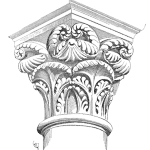
True or False? Reliability Centered Maintenance (RCM) has serious weaknesses in an industrial environment. False!
Reliability Centered Maintenance (RCM) has been successfully applied across nearly every industry—from manufacturing, to oil and gas, to the military, to power generation, and beyond. The original authors of RCM, Stanley Nowlan and Howard Heap, aimed to make RCM principles applicable to all complex equipment, not just airplanes. In this video, we dive into why RCM continues to thrive in diverse environments.
[Read more…]by Hemant Urdhwareshe Leave a Comment

Dear friends, we are happy to release our 90th technical video! In this video, Hemant Urdhwareshe, Fellow of American Society for Quality (ASQ), explains the various functions in reliability mathematics. Hemant has explained Probability Density Function (PDF), Cumulative Failure Distribution Function (CDF), Reliability Function and the Hazard Function. Hemant has also briefly explained the mathematical derivations of these functions as well as their relationships. In addition, the video includes an application example of estimating B02 life when the hazard function is known. The video is little long, so viewers are requested to be patient and watch the complete video. This will be very useful in preparing for the Certified Reliability Engineer Exam conducted by ASQ.
[Read more…]by Christopher Jackson 2 Comments

Modern militaries don’t win many wars these days. The most dominant, well-funded, highly-trained armies have consistently lost (or at least not won) the Korean War, Vietnam War, Afghanistan War, arguably the Iraq War, and plenty of others. And many dominant, well-funded, highly-trained companies are consistently spitting out unreliable or unimaginative products that smaller and less dogmatic companies have no problem bettering.
To understand why, let’s look at a man called Robert McNamara.
[Read more…]by Ayaz Bayramov Leave a Comment
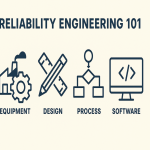
September 2013. That was the date I accepted an offer for a Maintenance and Reliability Engineer role in one of the largest oil and gas service companies in the world. I had no clue what the role really meant. Since it was about industrial equipment, I thought, I am a Mechanical Engineer, I will figure it out.
Later I realized it was not only me who did not know what reliability engineers do. More or less all my stakeholders, including my manager, were not very clear about it either. So, I had to learn on my own, and later find ways to add value to the business.
If you are a fresh graduate engineer looking to build a career in reliability engineering, or a company unsure about what type of engineering service to seek or who to hire to improve product or process reliability, you are in the right place.
By spending just 10 minutes reading this article, you will learn:
by Michael Keer Leave a Comment

Many companies, especially for high-complexity products such as energy storage and robotics, are moving away from outsourced manufacturing to establish their own internal operations. In fact, Kearney’s 10th Annual Reshoring Index finds that reshoring has substantially increased during the past decade.
This paradigm shift, driven by the need for closer design and production integration, poses opportunities and challenges. This article delves into the essential steps and considerations to set up an effective internal manufacturing facility tailored for the hardware-based product industry.
[Read more…]by Fred Schenkelberg Leave a Comment
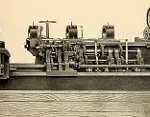
I had an interesting case study a couple weeks ago, where “I’m giving you what you want, not what you asked for “ when the requirement as usual was a blanket MTBF, but the product design elements clearly indicated wearout could / would be a factor. — Kevin
by Semion Gengrinovich 1 Comment
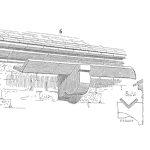
As industries increasingly rely on complex electromechanical systems, the importance of Return Parts Analysis (RPA) cannot be overstated. This crucial process involves forensic examination of failed components to determine root causes and prevent future issues. Let’s explore why RPA is essential, particularly for components like valves, sensors, pumps, and electrical boards.
Return Parts Analysis provides invaluable insights into component failures offering benefits that extend far beyond simple troubleshooting.
[Read more…]by James Reyes-Picknell Leave a Comment

Today’s Gremlin – “Perfectionist”, is often a planner or an engineer. This Gremlin holds himself or herself to extremely high, pretty much unattainable, standards. They cannot be found to be wrong by anyone. Perfectionists go to great lengths to get everything they do, 100% right, 100% of the time.
We all know that getting part way complete, even a large part of the way complete, is quick and easy. Although whatever we are doing may not be perfect, it is close and for most purposes, it may be good enough.
[Read more…]by Mike Sondalini Leave a Comment

Welcome to the start of the training users get on how to build a Plant Wellness Way enterprise asset life cycle management system-of-reliability once their company begins using the PWWEAM methodology.
Throughout the course we interchange the name of the methodology commonly called ‘Enterprise Asset Management’ with engineering asset management, physical asset management, and asset life-cycle management. All these names mean the same thing. We also will switch between referring to Plant Wellness Way Enterprise Asset Management methodology to shorter versions, such as PWW EAM or PWW.
by Greg Hutchins Leave a Comment

The start of fall might feel too soon to begin preparing for next winter. But with memories of snowstorms fresh in your mind, now is the perfect time to review your emergency response plans. Preparing emergency response plans of time also means you’ll be ready when snow, tornadoes, hurricanes, wildfires, drought, or other types of severe weather hit.
Emergency preparedness is one of the most important things a company can invest in. When an emergency happens, being prepared can be the difference between the loss of money, time, and—most importantly—the safety of your staff. Thanks to advances in technology, companies can implement platforms and tools that can help them prepare for anything from inclement weather to a dangerous intruder or a pandemic.
[Read more…]by George Williams Leave a Comment

In this video, George Williams, Founder and CEO of Reliability X, dives into “Decision Making,” a vital leadership building block within the Maintenance and Reliability Best Practices Framework. Learn how to:
Structured decision-making empowers organizations to remain agile, efficient, and on track. To learn more about the Maintenance and Reliability Best Practices Framework, visit www.reliabilityx.com/mrbpframework.
If you’re ready to take your leadership skills to the next level, connect with us at www.reliability.com/contact.
[Read more…]by Nancy Regan Leave a Comment
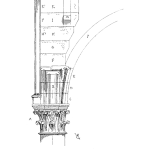
In this video, I share how Reliability Centered Maintenance (RCM) helps break the cycle of reactive mode by identifying plausible Failure Modes. I’ll explain the four criteria used for listing Failure Modes in an RCM analysis and how this proactive approach helps prevent unexpected downtime. Plus, stick around for a progress update on our building project!
[Read more…]